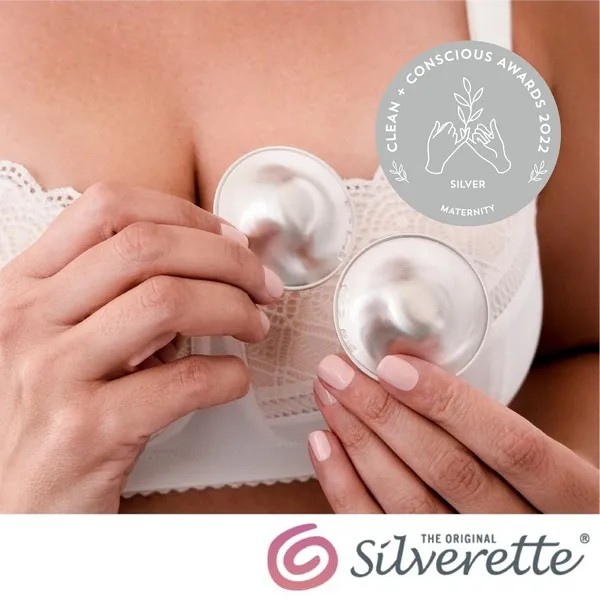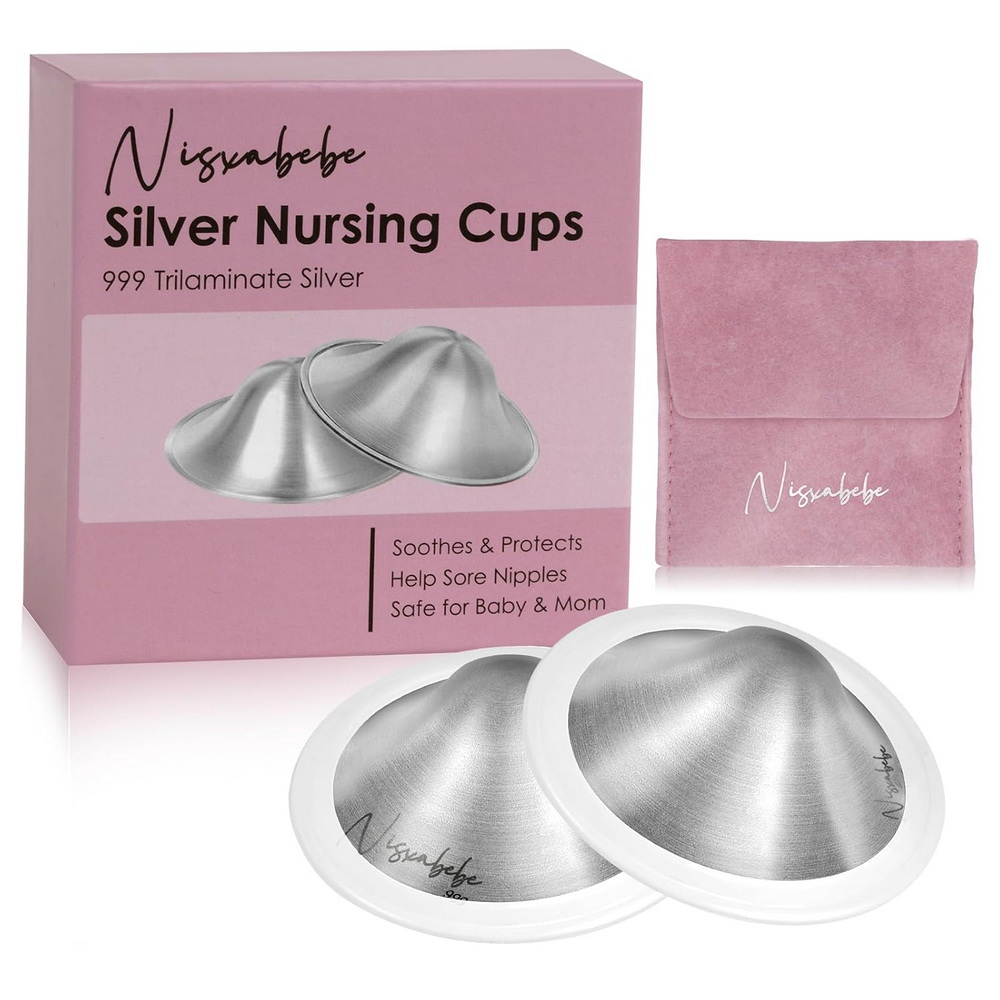Content Menu
● Introduction: Why Clean Silverette Nipple Covers?
● Daily Cleaning Routine
>> Rinse After Every Use
>> Avoid Soaps and Detergents
● Weekly Deep Clean: Removing Tarnish and Buildup
>> Baking Soda Paste Method
>> Drying and Storing
● Advanced Cleaning Techniques
>> Handling Dried Milk or Stubborn Residues
>> Travel and On-the-Go Cleaning
● Do's and Don'ts: Maintaining Silverette Nipple Covers
>> Quick Tips for Longevity
● Video Tutorials: Cleaning Silverette Nipple Covers
● Troubleshooting and Care: Real Mom Experiences
● Silverette Nipple Covers FAQ
>> 1. How often should Silverette nipple covers be cleaned?
>> 2. Is it safe to use soap or dishwasher for Silverette nipple covers?
>> 3. What should I do if my Silverette nipple covers turn yellow or tarnish?
>> 4. Can I use creams or balms with Silverette nipple covers?
>> 5. How can I clean Silverette nipple covers when traveling or outside the home?
>> 6. What if milk residue won't come off with routine rinsing?
>> 7. Why should the nipple covers be thoroughly dried before storage?
>> 8. How do Silverette nipple covers help with healing?
>> 9. What's the best way to store cleaned Silverette nipple covers?
>> 10. How should I clean Silverette nipple covers after accidental contact with creams?
● Conclusion
● References
How to Clean Silverette Nipple Covers: The Ultimate Guide for Moms and Caregivers
Silverette nipple covers have become an essential companion for breastfeeding mothers worldwide, renowned for their natural healing and antimicrobial properties. However, keeping them clean is crucial for both hygiene and effectiveness. This article presents a step-by-step guide covering daily, weekly, and deep-cleaning routines, troubleshooting, tips from real users, and much more—helping you make the most of your Silverette products while maintaining optimal cleanliness.

Introduction: Why Clean Silverette Nipple Covers?
Proper care ensures longevity and maximum benefit from your Silverette nipple covers. Silver naturally resists bacteria, viruses, and fungi, but regular cleaning keeps the shields comfortable, visually appealing, and safe for prolonged use. Consistent hygiene can also prevent tarnishing and potential irritation. Thus, learning how to clean Silverette nipple covers is essential for every mother using them.[1][2][3]
Daily Cleaning Routine
Rinse After Every Use
After each breastfeeding or pumping session, it's essential to rinse your Silverette nipple covers with warm water. Simply remove them and hold under running water, using your fingers or a soft cloth to wipe away any milk residue. This prevents build-up and keeps the covers fresh between feedings.[2][3][4]
Visual Guide Suggestion:
Insert a clean, high-resolution photo showing Silverette nipple covers being rinsed under a gentle stream of warm water.
Avoid Soaps and Detergents
For routine cleaning, do *not* use harsh soaps, detergents, bleach, or sterilizing tablets. These products may damage the silver and reduce its antimicrobial efficacy. Instead, stick to water or a very mild, fragrance-free hand soap if absolutely necessary.[5][3][1]
Weekly Deep Clean: Removing Tarnish and Buildup
Baking Soda Paste Method
Silver naturally tarnishes over time, forming a yellow or dull surface. This is a normal chemical process and doesn't affect performance, but you can remove it for aesthetic reasons. Here's how to clean Silverette nipple covers to restore their shine:
1. Mix one teaspoon of baking soda (bicarbonate of soda) with a few drops of water to create a creamy paste.
2. Gently rub the paste onto the surface of the Silverette nipple covers with your fingers or a soft, clean cloth.
3. Rinse thoroughly with warm water.
4. Pat dry with a soft towel and let air dry completely.[6][3][7][8][9][1]
Drying and Storing
After cleaning, pat your Silverette nipple covers dry with a lint-free cloth and allow them to air dry fully before storing. Moisture retention can accelerate tarnishing and lead to bacterial growth over time.[3][2]

Advanced Cleaning Techniques
Handling Dried Milk or Stubborn Residues
If you notice stubborn, dried milk stains on your Silverette nipple covers, soak them in warm water for a few minutes to loosen the residue. Then, use a soft thumb or microfiber cloth to gently wipe away. Avoid abrasive sponges or scrubbing pads as these will scratch the silver's surface.[7][3]
Visual Guide Suggestion:
A close-up photo of a Silverette nipple cover soaking in a shallow dish of warm water.
Travel and On-the-Go Cleaning
When traveling, pack a small travel kit—such as a portable bottle warmer or thermos with warm water, gentle soap sachets, and a soft cloth—for easy cleaning when out and about. Keep a sealable clean pouch for storing dried covers to avoid contamination.[3]
Do's and Don'ts: Maintaining Silverette Nipple Covers
Quick Tips for Longevity
- Do: Rinse with warm water after every use.
- Do: Deep-clean weekly with baking soda paste.
- Do: Dry thoroughly before storing.
- Don't: Use bleach, harsh chemicals, or metal scrubbers.
- Don't: Boil, use a dishwasher, or expose to high heat.
Video Tutorials: Cleaning Silverette Nipple Covers
To help visual learners, here are recommended video tutorials:
- YouTube: "How to clean silverette cups" by LA Lactation, LLC ([How-to cleaning video tutorial])[10][4][2]
Troubleshooting and Care: Real Mom Experiences
Silverette nipple covers have unique properties. Tarnishing is normal and does not affect their antimicrobial power; simple cleaning restores their shine. Some users have shared that using the pad of the thumb is more effective than brushes for residue removal, especially when milk dries overnight. If you make the mistake of using creams or balms, be sure to deep-clean immediately and discontinue use of such products—silver works best when in direct contact with skin and breastmilk alone.[1][2][3]
Silverette Nipple Covers FAQ
1. How often should Silverette nipple covers be cleaned?
Clean them with warm water after each use and give a deep clean with baking soda paste once a week. Avoid using soaps or chemicals.[1][3]
2. Is it safe to use soap or dishwasher for Silverette nipple covers?
No, only use mild soap if necessary and never put Silverette nipple covers in a dishwasher or sterilizer; harsh cleaning methods can damage the silver.[4][2][1]
3. What should I do if my Silverette nipple covers turn yellow or tarnish?
Tarnishing is normal; use a baking soda paste to gently restore shine. Do not worry, as this does not affect their effectiveness.[8][9][7][1]
4. Can I use creams or balms with Silverette nipple covers?
No. Silverette nipple covers work best on clean skin with breastmilk only. Creams, pastes, or balms may create residue or reduce efficacy.[2][3]
5. How can I clean Silverette nipple covers when traveling or outside the home?
Pack a small cleaning kit with warm water, soft cloths, and mild soap. Follow the same rinse and dry protocol as at home.[3]
6. What if milk residue won't come off with routine rinsing?
Soak in warm water, then gently rub residue away with your thumb or microfiber cloth; deep-clean weekly with baking soda paste if needed.[7][3]
7. Why should the nipple covers be thoroughly dried before storage?
Air drying reduces risks of tarnishing and ensures bacterial resistance is maintained.[3]
8. How do Silverette nipple covers help with healing?
Silver's antimicrobial, antifungal, and anti-inflammatory properties help soothe and protect sore nipples, often speeding up the healing process.[4][1]
9. What's the best way to store cleaned Silverette nipple covers?
Once dry, store in a breathable, clean pouch or case to prevent moisture buildup and accidental contamination.[3]
10. How should I clean Silverette nipple covers after accidental contact with creams?
Immediately rinse thoroughly, then do a deep clean with baking soda paste to remove oils or residues. Stop using creams while continuing use.[2][3]
Conclusion
Keeping your Silverette nipple covers clean is a straightforward process that requires a daily warm water rinse and a weekly baking soda paste treatment for deep cleaning. Avoid soaps, chemicals, or boiling, and always ensure your covers are dry before storage. These simple practices help maximize the effectiveness and lifespan of your Silverette nipple covers—making your breastfeeding journey smoother, healthier, and more comfortable.[9][7][4][1][2][3]
References
[1](https://silveretteaustralia.com/blogs/resources/how-to-clean-silverette)
[2](https://www.youtube.com/watch?v=W9tBV1Nj0xM)
[3](https://gomommyus.com/blogs/news/how-to-clean-silver-nipple-shields)
[4](https://www.youtube.com/watch?v=sOUIXa5HiJU)
[5](https://www.reddit.com/r/breastfeeding/comments/12h43zd/silverettes/)
[6](https://silveretteusa.com/pages/faqs)
[7](https://www.reddit.com/r/breastfeeding/comments/1isokna/tarnished_silverettes_how_to_clean/)
[8](https://www.instagram.com/reel/DJ4iATQPutg/)
[9](https://www.tiktok.com/discover/how-to-clean-silverette-covers)
[10](https://www.youtube.com/watch?v=m1kMAWZcR_s)
[11](https://www.tiktok.com/@silveretteusa/video/7285921781028785451)
[12](https://silverette.nl/en/product/silverette-cleaning-kit/)
[13](https://www.instagram.com/reel/DMqwJRUIsMx/)
[14](https://silveretteusa.com/products/silverette-nursing-cups)
[15](https://www.youtube.com/shorts/3IZK-UXOwHk)

































































